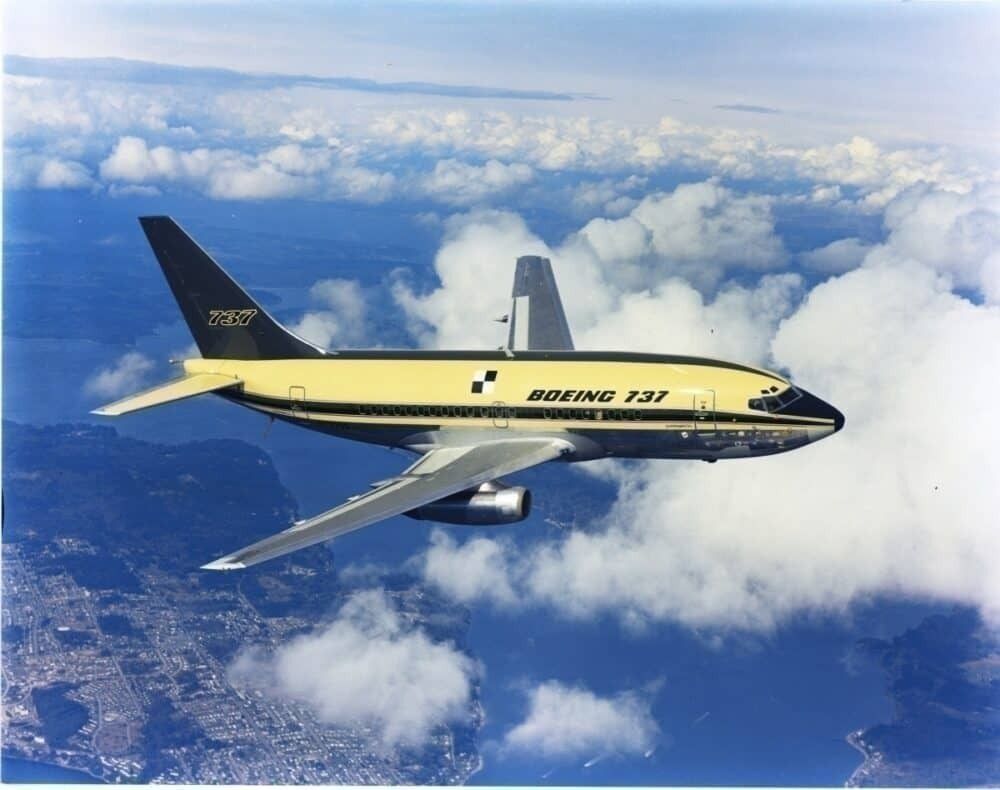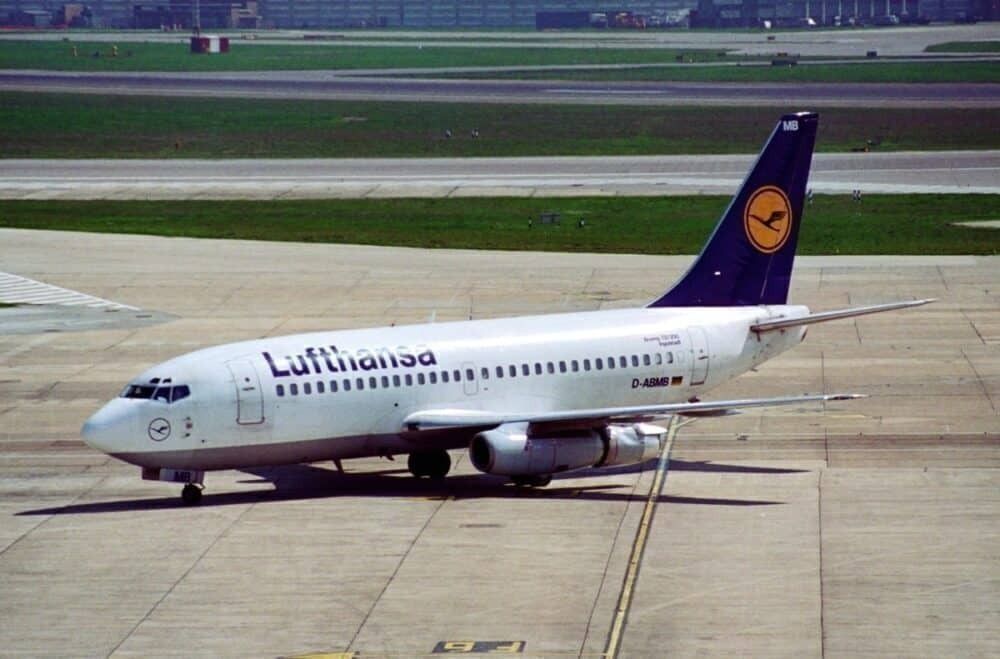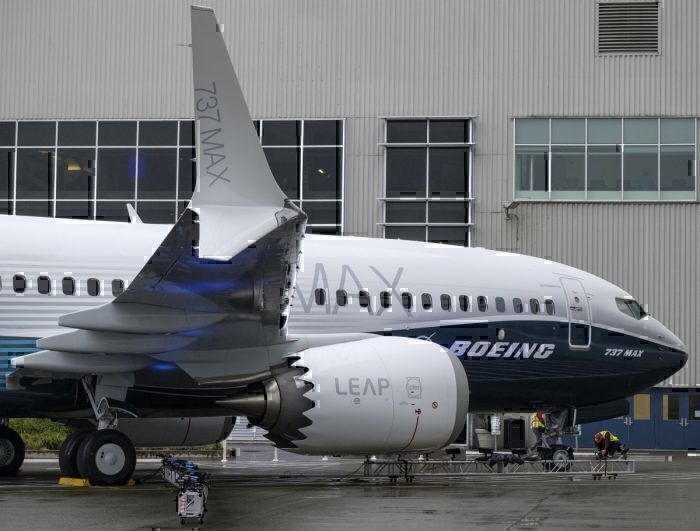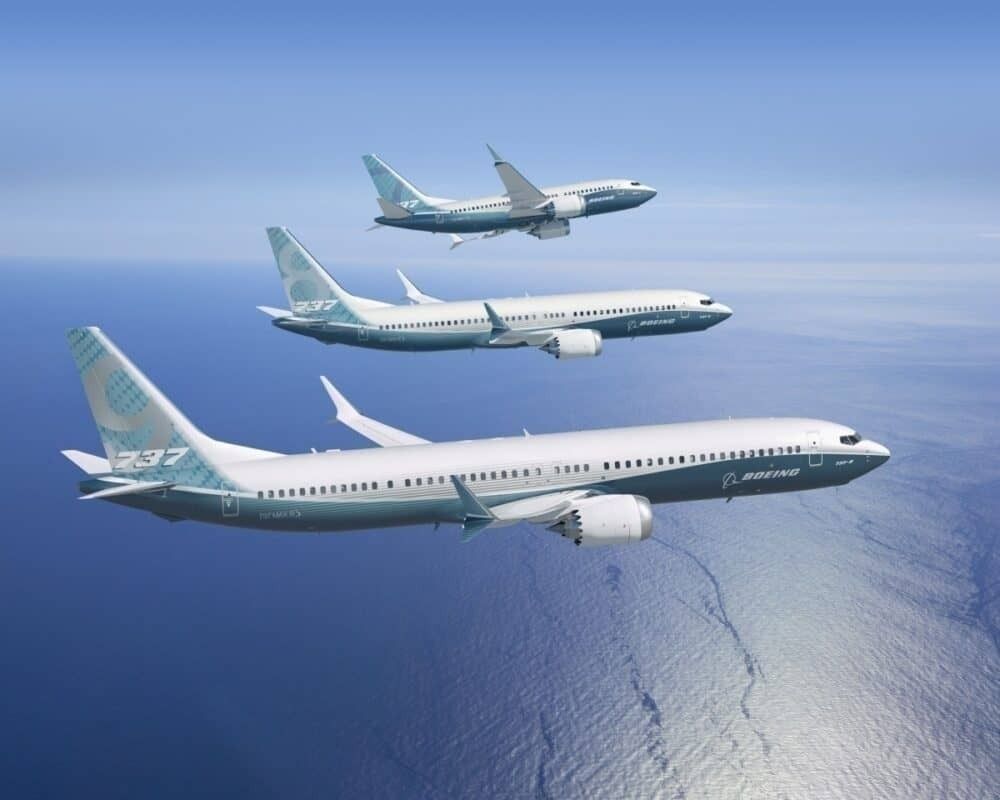The Boeing 737 has changed a great deal since its launch in 1968. The latest 737 MAX aircraft is a very different aircraft from the early Original and Classic series. As technology and airline expectations have changed, so has the 737 family, keeping it in the top spot for most successful narrowbody aircraft to date.
The 737 Original family
The 737 has seen 22 variants since the original 737-100 launched with Lufthansa in 1968. Boeing’s focus was very different at that time from what it has looked at now with the MAX. The main change that the 737-100 offered was twin engines. The earlier Boeing aircraft, the 707 and 727, had both been very successful. But market attention had shifted to a more economical two engine possibility.
The 737 Original made its mark with two engines, placed under the wings, and a wider fuselage than its competitors at the time. This gave it six across passenger capacity and also allowed for simple conversion to hold standard-sized freight containers.
The Original series also includes the 737-200. This offered an extended fuselage and engine improvements and according to Boeing data, went on to sell 1,095 aircraft (as opposed to only 60 737-100 aircraft). The focus on meeting customer requirements continued, with options such as an ‘Unpaved Strip Kit’ allowing landing on gravel runways, popular with some airlines in places such as Canada and Alaska.
737 MAX - Significant improvements in efficiency
Moving forward to 2011, Boeing launched the latest member of its 737 family, the 737 MAX. A large part of the success of the whole type has been down to keeping commonality between the different variants and offering the improvements needed to beat the competition. In that respect, the 737 MAX was launched with the same motivation as the 737-100, to beat the competing aircraft at the time – in this case, now the A320neo family (launched in 2010).
Much of the design of the 737 has stayed similar over the years. The main change that the MAX offers is a more effective operation. This is the same as the main changes introduced in the previous 737 series, the 737 Next Generation. The 737 MAX uses new, and more efficient, CFM International LEAP engines, and includes several aerodynamic modifications, including distinctive winglets.
To get some idea of progress in fuel efficiency, just note how the efficiency was improved with each generation. Improvements between the Original and the Classic series (737-300, 400, and 500) brought a fuel burn reduced of around 20% (according to the website The 737 Information Site). There was then a 7% improvement with the Next Generation series and a 14% improvement between the Next Generation and 737 MAX series.
Changes in passenger operation
The 737 MAX is a much more efficient aircraft and cost-effective for airlines. But how have operating characteristics changed over more than 40 years between them? Both passenger capacity and range have increased substantially, making aircraft much more flexible in their deployments.
The 737-200, for example, offers a typical (single class) capacity of 115 to 130 passengers. And its range is 4,800 kilometers. The 737 MAX series has introduced several variants, with different options:
|
Model |
Passengers |
Range |
|
737 MAX 7 |
153 |
7,130 km |
|
737 MAX 8 |
178 |
6,570 km |
|
737 MAX 9 |
193 |
6,570 km |
|
737 MAX 10 |
204 |
6,110 km |
Which will be the most popular 737 model?
The 737 has been the most popular aircraft to date (although the A320 has now caught up in orders). Of its members, the 737-800 has been the best selling, with a total of 4,991 orders. This is due in large part to its compromise between range and capacity.
The 737 MAX, of course, has suffered from its grounding in 2019 following two crashes. It has still proved popular, though, with 4,633 orders (according to Boeing data for April 2020). It could well go on to be Boeing’s most popular model yet, once its problems are overcome.
Feel free to share your thoughts on the 737 family in the comments below. Things have moved far since the Original 737-100 and 737-200 aircraft, but will the series recover from the ongoing 737 MAX issues?





